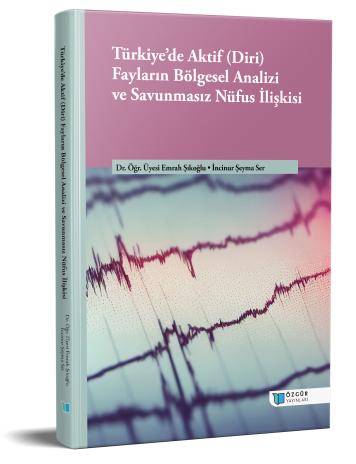
Regional Analysis of Active Faults in Turkey and their Relationship with Vulnerable Population
Synopsis
Natural disasters are recognized as one of the greatest tragedies in human history, and among these disasters, earthquakes are natural events that can have particularly deep and lasting impacts on societies. This study provides a detailed examination of the relationship between active fault lines and population structures in Turkey. Initially, the research investigates the distribution of active fault lines across different regions and their correlation with general population density in those areas. Subsequently, it focuses on the proportional distribution of more vulnerable population groups, particularly those aged 0-14 and over 65, in provinces intersected by these fault lines. These age groups are of special concern due to their limited abilities in self-protection and evacuation during earthquakes, owing to physical limitations.
Turkey consists of a total of 922 districts and 81 provinces. Active fault lines run through 536 of these districts and 68 provinces within Turkey’s administrative boundaries. Of the total population of 85,279,553 in the country, 75.80%, or 64,643.681 people, reside in these active fault line areas. Among this population living on active fault lines in Turkey, 17.67% belongs to sensitive population groups. Regionally, the Aegean, Eastern Anatolia, and Central Anatolia regions have the highest number of provinces intersected by active (living) fault lines. In terms of risk-reduction measures, analyses considering active fault lines and population density indicate that the most at-risk areas are the Aegean, Marmara, and Central Anatolia. İzmir, Manisa, and Aydın (Aegean); Bursa, Kocaeli, and Balıkesir (Marmara); Kayseri, Konya, and Eskişehir (Central Anatolia) are among the risky provinces with high populations located on active fault lines. The results highlight especially vulnerable areas in the Central Anatolia, Aegean, and Mediterranean regions, with a significant concentration of the sensitive population aged 65 and above.
The fact that 17.67% of the population living on active fault lines in Turkey comprises sensitive population groups necessitates various measures. These include the construction of earthquake-resistant buildings, increased earthquake education and awareness activities, preparation and implementation of post-earthquake response and recovery plans, mapping and updating of living fault lines and earthquake risks, and a detailed analysis of factors such as economic and health status, disaster experiences, family and community ties, social capital, and gender for the population over 65. The sensitive population is a group that faces difficulties in accessing basic needs or has a high probability of life loss. Therefore, in regions with a high proportion of the sensitive population, adequate public services in health, education, employment, and social security are essential.

